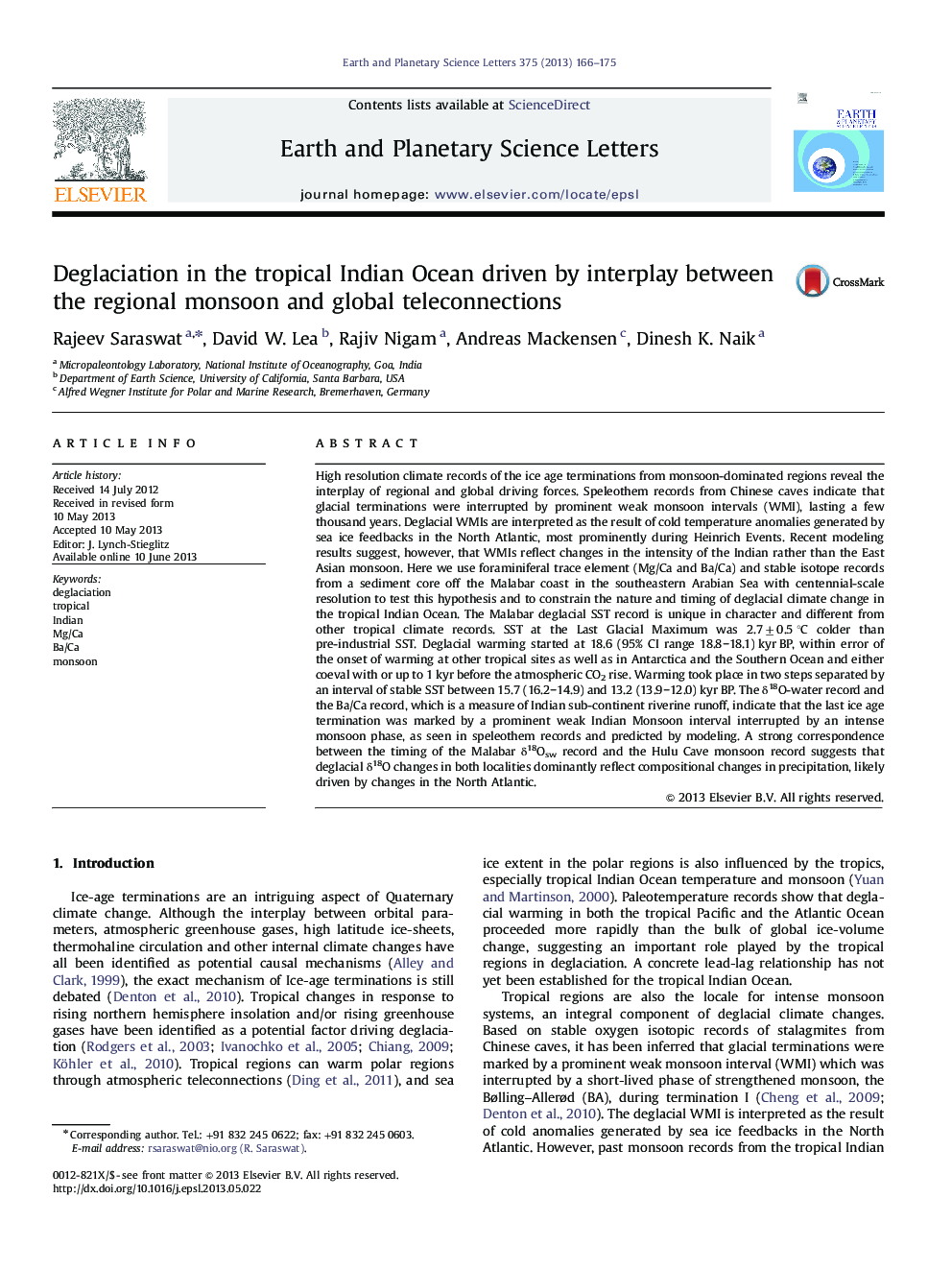| کد مقاله | کد نشریه | سال انتشار | مقاله انگلیسی | نسخه تمام متن |
|---|---|---|---|---|
| 6430196 | 1634780 | 2013 | 10 صفحه PDF | دانلود رایگان |

- First ever centennial scale deglacial SST record from the northern Indian Ocean.
- SST at the Last Glacial Maximum was 2.7±0.5 °C colder than pre-industrial SST.
- Warming began at 18.6 kyr BP either coeval with or up to 1 kyr before the CO2 rise.
- Deglaciation marked by weak monsoon interval interrupted by intense monsoon phase.
- δ18O reflect compositional change in precipitation, likely driven by N Atlantic.
High resolution climate records of the ice age terminations from monsoon-dominated regions reveal the interplay of regional and global driving forces. Speleothem records from Chinese caves indicate that glacial terminations were interrupted by prominent weak monsoon intervals (WMI), lasting a few thousand years. Deglacial WMIs are interpreted as the result of cold temperature anomalies generated by sea ice feedbacks in the North Atlantic, most prominently during Heinrich Events. Recent modeling results suggest, however, that WMIs reflect changes in the intensity of the Indian rather than the East Asian monsoon. Here we use foraminiferal trace element (Mg/Ca and Ba/Ca) and stable isotope records from a sediment core off the Malabar coast in the southeastern Arabian Sea with centennial-scale resolution to test this hypothesis and to constrain the nature and timing of deglacial climate change in the tropical Indian Ocean. The Malabar deglacial SST record is unique in character and different from other tropical climate records. SST at the Last Glacial Maximum was 2.7±0.5 °C colder than pre-industrial SST. Deglacial warming started at 18.6 (95% CI range 18.8â18.1) kyr BP, within error of the onset of warming at other tropical sites as well as in Antarctica and the Southern Ocean and either coeval with or up to 1 kyr before the atmospheric CO2 rise. Warming took place in two steps separated by an interval of stable SST between 15.7 (16.2â14.9) and 13.2 (13.9â12.0) kyr BP. The δ18O-water record and the Ba/Ca record, which is a measure of Indian sub-continent riverine runoff, indicate that the last ice age termination was marked by a prominent weak Indian Monsoon interval interrupted by an intense monsoon phase, as seen in speleothem records and predicted by modeling. A strong correspondence between the timing of the Malabar δ18Osw record and the Hulu Cave monsoon record suggests that deglacial δ18O changes in both localities dominantly reflect compositional changes in precipitation, likely driven by changes in the North Atlantic.
Journal: Earth and Planetary Science Letters - Volume 375, 1 August 2013, Pages 166-175